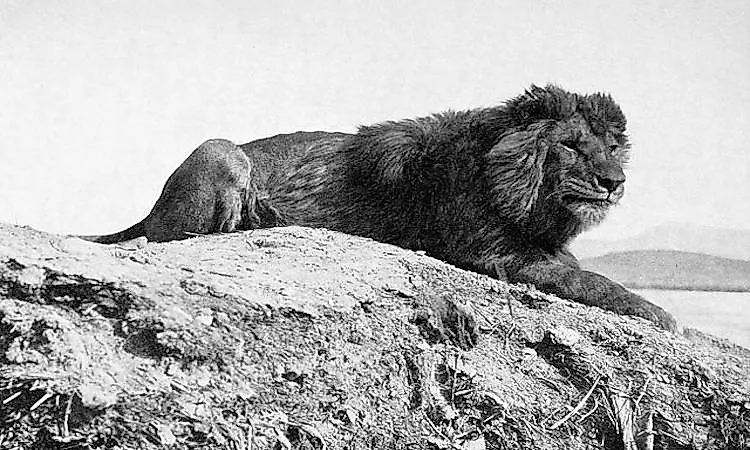Animals That Went Extinct in the 20th Century

An animal is considered extinct when there are no more living species. Any animal listed as endangered on the IUCN Red List is at risk of becoming extinct in the future. Several factors lead to species extinction, including: hunting, habitat destruction, and climate change.
Animals That Went Extinct In The 20th Century
Passenger Pigeon
The first animal to become extinct during the 20th century was the passenger pigeon. This bird species was endemic to North America, where it was the most common bird with a population of between 3 and 5 billion. Records indicate that the passenger pigeon was recognized by its unique sounds, which were described as harsh and extremely loud.
Indigenous peoples traditionally hunted it as a food source. After the arrival of Europeans, the passenger pigeon was marketed as an affordable meat alternative. Increased hunting and deforestation led to its eventual extinction in 1914.
Barbary Lion
The Barbary lion was native to the Atlas mountain region of North Africa. It is considered one of the biggest lion species to have existed. The Barbary lion grew to lengths of between 7 feet, 9 inches and 9 feet, 2 inches. This species weighed anywhere from 600 to 660 pounds.
This lion species was once used to fight gladiators in the Roman Colosseum. It first suffered population losses in the mid-1800’s when humans began hunting it for payment. It was popular as both a hotel and circus attraction. Additionally, this lion species was prized for its long mane, which extended over the shoulders and to the stomach. The Barbary lion became extinct in the wild in 1942.
Mexican Grizzly Bear
The Mexican grizzly bear is one of the largest mammals to have lived in Mexico. It grew to an average height of 6 feet and weighed approximately 700 pounds. It was recognized for its slightly silver fur, although some were yellowish-brown to reddish in color.
Farmers considered this bear to be a danger to livestock around the beginning of the 20th century. Because of this perceived threat, the Mexican grizzly bear was trapped, poisoned, and shot. All of these actions significantly reduced its population, which was only 30 in 1960. The government of Mexico gave this bear protected status, but that did little to stop the killing. By 1969, the Mexican grizzly bear was extinct.
Golden Toad
The golden toad was endemic to the Monteverde Cloud Forest Reserve in Costa Rica. The male was a yellowish-orange color, thus giving the species its names. Females, however, were found in several colors, including red, green, and black.
The golden toad was first discovered in 1964 and maintained a population size of around 1,500 until 1987. By 1989, this species had gone extinct for several reasons, including: climate change, restricted range, air pollution, and the fungal disease Chytridiomycosis. The golden toad is the first species that became extinct due to climate change. It was commonly portrayed on posters promoting biodiversity and wildlife conservation.
Levuana Moth
The Levuana moth, native to Fiji, is the last species to become extinct in the 20th century. It was a greyish-blue color with a golden-yellow abdomen. It had a wingspan of just over half an inch.
The Levuana moth was considered a pest to coconut crops and threatened the survival of Fijian indigenous peoples, who rely on the coconut plant for food, medicine, fuel, and building supplies. In the 1920’s, this species was subjected to a pest control program that utilized parasitoids. The program was successful at decreasing its population size. Many people criticized the approach, questioning the ethics of biological control programs. The Levuana moth has been considered extinct since 1994.
Future Extinctions
The IUCN Red List of endangered species continues to grow every year. Researchers estimate that between .01% and .1% of all species are becoming extinct every year, a rate faster than the natural extinction rate. Estimates of the number of wildlife species (scientists are still discovering new species every year) range from 2 million to 100 million. This means a minimum extinction rate of 200 species and a maximum extinction rate of 100,000 annually.
Animals That Went Extinct in the 20th Century
| Common name | Scientific Name | Range | Year of Extinction |
| Passenger pigeon | Ectopistes migratorius | North America | 1914 |
| Thylacine | Thylacinus cynocephalus | Australia, Tasmania, New Guinea | 1936 |
| Barbary lion | Felis leo | North Africa | 1942 |
| Mexican grizzly bear | Ursus arctos | Mexico | 1969 |
| Caspian tiger | Panthera tigris virgata | Central Eurasia | 1970 |
| Kouprey | Bos sauveli | Southeastern Asia | 1970 |
| Golden Toad | Incilius periglenes | Costa Rica | 1989 |
| Levuana Moth | Levuana iridescens | Hawaii | 1994 |











